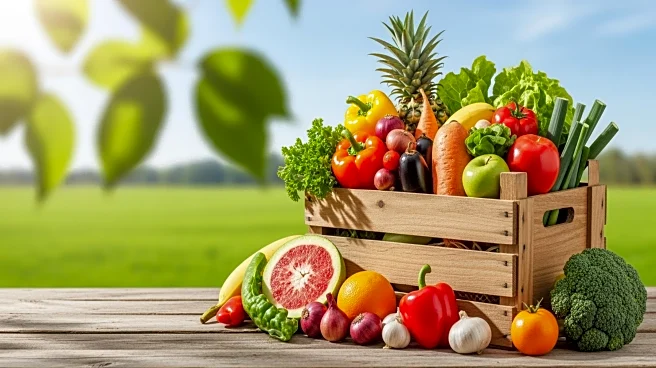What's Happening?
Regenerative farming is becoming increasingly popular in the United States as consumers show a growing interest in the origins of their food. This agricultural approach, which includes techniques like
cover cropping, crop rotation, and reduced tillage, aims to improve soil health, conserve water, and reduce chemical use. Despite the lack of a universal standard for what constitutes regenerative farming, the practice is gaining traction with private investments from major brands such as PepsiCo, General Mills, and McDonald's. These companies are supporting regenerative practices across millions of U.S. acres, promoting crop diversity and rotational grazing. Farmers like Jade Koyle of Grand Teton Ancient Grains in Idaho are adopting these methods, although the transition can be risky due to the time it takes to see results.
Why It's Important?
The shift towards regenerative farming has significant implications for U.S. agriculture and consumer markets. As more consumers are willing to pay a premium for products labeled as regenerative, this trend could lead to increased profitability for farmers who adopt these practices. Additionally, regenerative farming has the potential to enhance soil health and increase the nutritional value of food, which could have long-term benefits for public health. However, the lack of standardized definitions and verification processes poses challenges for both producers and consumers. The cancellation of federal climate-smart farming initiatives has left a gap in funding, but private sector investments are helping to fill this void.
What's Next?
The future of regenerative farming in the U.S. looks promising, with continued growth expected as more farmers and companies invest in these practices. Education and consumer awareness will play crucial roles in expanding the market for regenerative products. As more research is conducted, the benefits of regenerative farming, such as improved nutrition and environmental sustainability, are likely to become more evident. This could lead to broader adoption and potentially influence agricultural policy and subsidy programs to support sustainable farming practices.
Beyond the Headlines
Regenerative farming not only addresses environmental concerns but also touches on ethical and cultural dimensions of food production. By focusing on soil health and biodiversity, this approach aligns with growing consumer demand for sustainable and ethically produced food. The movement also encourages collaboration among farmers, fostering a community of shared knowledge and practices. As the industry evolves, it may redefine agricultural standards and consumer expectations, leading to a more sustainable food system.












